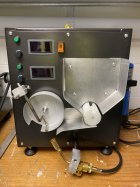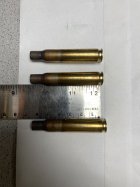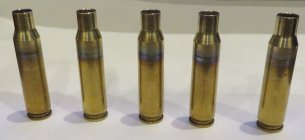Good evening,
i have been slowly getting into reloading over last couple of years but with materials scarce or pricey, I decided to work on a few projects based on some things I saw on the web. One of the projects was an annealing machine based off a couple I saw on YouTube and the web. At the slowest setting, a case will be in the torch flame for a maximum of 12 seconds. The necks never change color or get red, so I decided to pick up an infrared thermometer. I know I don’t want them red yet guys showing these machines run the cases for maybe 5 to 6 seconds. Running 30-06 brass through it for 11 seconds, drops into collection pan, and then hit with infrared, but neck case does not get over 215 degrees Fahrenheit. Using single propane torch.
Based on readings, to soften for neck sizing, I should be in the 450 range. Has anyone built one of these? If so, have you ever checked to see how hot the case neck get? I haven’t seen anyone on web verify case temperature after running through the machine.
see the pictures, it also looks as if the heat is getting too far down the case.
just looking for some thoughts or feedback from someone who built one of these machines. I plan on getting some temp crayons from welding supply to check the thermometer.
thanks in advance

i have been slowly getting into reloading over last couple of years but with materials scarce or pricey, I decided to work on a few projects based on some things I saw on the web. One of the projects was an annealing machine based off a couple I saw on YouTube and the web. At the slowest setting, a case will be in the torch flame for a maximum of 12 seconds. The necks never change color or get red, so I decided to pick up an infrared thermometer. I know I don’t want them red yet guys showing these machines run the cases for maybe 5 to 6 seconds. Running 30-06 brass through it for 11 seconds, drops into collection pan, and then hit with infrared, but neck case does not get over 215 degrees Fahrenheit. Using single propane torch.
Based on readings, to soften for neck sizing, I should be in the 450 range. Has anyone built one of these? If so, have you ever checked to see how hot the case neck get? I haven’t seen anyone on web verify case temperature after running through the machine.
see the pictures, it also looks as if the heat is getting too far down the case.
just looking for some thoughts or feedback from someone who built one of these machines. I plan on getting some temp crayons from welding supply to check the thermometer.
thanks in advance














